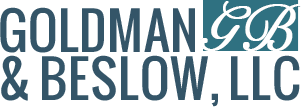If you have reached the point that you cannot afford your expenses and have mountains of debt continuing to pile up, you may feel as if you have no way out. You may consider bankruptcy, but you may have concerns regarding the costs associated with filing a petition and completing the bankruptcy process.
True, Chapter 7 and Chapter 13 bankruptcy both come with filing fees and other expenses. Therefore, you may think that because of your already existing financial troubles that this debt relief method also remains out of reach. However, gaining more information on filing fees and ways to pay may help you realize that bankruptcy could still be a viable option for you.
Which type of bankruptcy costs more?
Because Chapter 7 and Chapter 13 bankruptcies both involve different steps for completion, they also have different costs associated with them. In terms of basic filing fees, Chapter 7 bankruptcy comes in as the more expensive of the two options with basic fees totaling $335. For Chapter 13, your fees would come to $310. You should also know that the federal court sets these amounts. Therefore, if a service claims that you can file for less than this amount, you may want to remain wary of a possible scam.
Other fees may also arise depending on the details of your particular situation. For instance, if you start out with a Chapter 13 bankruptcy but later need to convert to a Chapter 7, you could face additional costs. Of course, if you choose to utilize professional legal assistance, attorneys’ fees will also apply.
How can you pay for bankruptcy?
Learning that it costs hundreds of dollars to simply begin the bankruptcy process may seem intimidating. However, it may help you to know that you could apply for payment assistance. You may have the chance to break your payments down into installments, or you could potentially apply for a waiver if you cannot afford the fees even with an installment breakdown and your income level falls below 150 percent of the poverty level.
If you do not know whether you may qualify for an installment plan or waiver, you may want to consider ways in which you could pay your fees. You may have the ability to raise the money, ask friends or family for help or possibly even use your tax refund if you receive one. Though it may seem overwhelming to considering putting so much money toward a debt relief option, bankruptcy may have the ability to set you on a stable financial track for the future.

